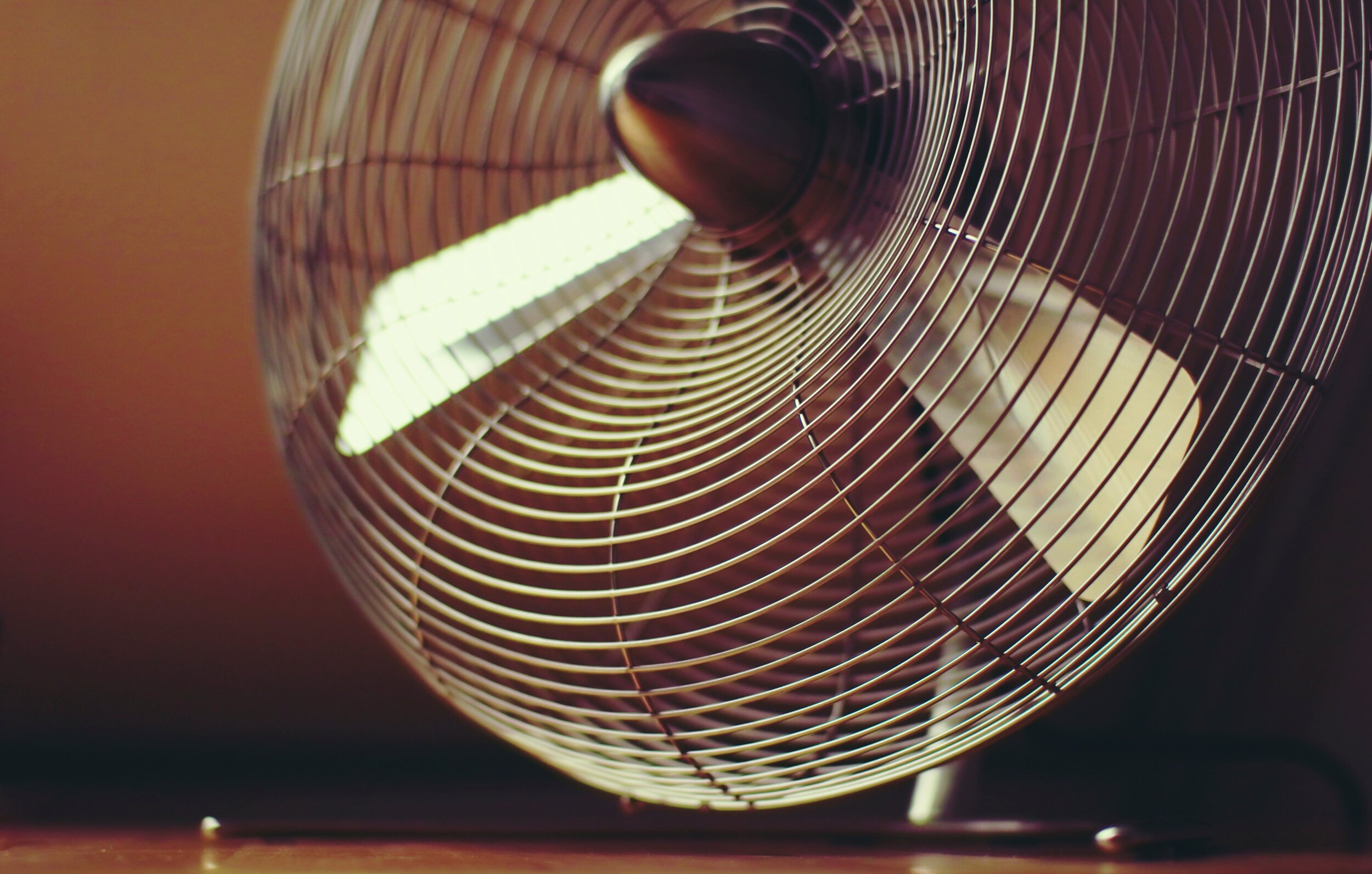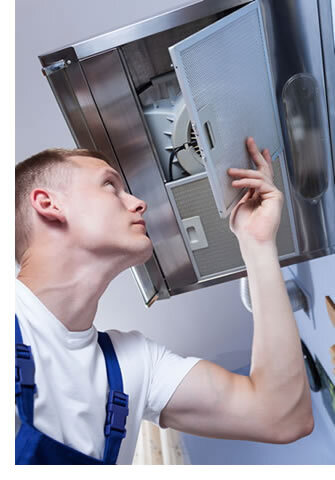One of the most used and least appreciated appliances in your kitchen, the range hood. You hardly ever notice that it’s there. You flick it on when you’re cooking, but that’s it, you don’t give it another thought. That is, of course, until it stops working.
We’ve gone through and listed the most common symptoms, what causes them, and then a bit about what you can do to fix these problems.
Symptom: Lights don’t work
Causes:
Bad user interface control
Bad light bulb sockets
The electronic control board failed
Wiring Failure
Broken light switch
Warning: Because of the way range hoods are set up, much of the work is guess and test when you’re doing it yourself. Sort of “well, if this didn’t work, then I need to replace this and see if that fixes it.”
Start by unplugging the hood and checking out the wiring connections between the light sockets and the control board or the light switch. If any of the wiring is loose or broken, repair or reconnect that while you have it open.
If the wiring is good, take a look at your Electronic Control Board (ECB) for burn marks. If there are burn marks, you’ll need to replace the ECB, because that indicates a failure.
If your range hood controls the lights via a user interface, you may need to replace it if it isn’t sending signals to the ECB when you’re pushing buttons. The user interface control is the keyboard and display panel that you select different functions on. From there, it sends a signal up to the ECB via a ribbon cable. This is where our warning from up top comes in. If the ECB isn’t turning the lights on, you’ll need to replace it. If the lights still don’t work, then you’ll need to replace the user interface control.
If, however you get to avoid this nonsense, because your range hood uses a switch, you get to do something different. Start by turning off and unplug the range hood. Then you’ll need to use a multimeter to test between the switch and the lights to see if there is continuity. If not, replace the switch.
If you’ve replaced your switch and it’s still not working, replace the bulbs. Then check that the light sockets are receiving electric current, again using the multimeter. If not, replace the sockets.
Symptom: Your Fan Isn’t Pulling Much Air
Causes:
Clogged Filters
The motor failed
A blade broke
Air duct problems
You’re trying to clear out your kitchen because your kid smoked it up, trying to make lunch. And it’s not doing anything. The problem might be that your fan isn’t pulling in much air.
If your range hood exhaust outside your home, start by checking the grease filters. If they’re dirty, wash or replace them. From there, take a look at the air damper. The air damper keeps air from flowing in through the vent when the range hood isn’t running. If it doesn’t open, it’s time to replace it. Also, check out the damper that’s above the fan to make sure that one opens properly as well. While you have the range open, take a look at your fan blade to see if it’s damaged. A damaged blade is no longer aerodynamic, so it’s not going to pull air in properly. If so, you’ll need to replace it. Once you’ve closed everything up, turn on the fan. If you’re still not getting a proper speed or your fan is making noise, it might be the fan motor. If so, the only option there is to fix it.
If, on the other hand, your range hood circulates the air back into the kitchen via a charcoal filter, things are only slightly different. Start by checking your filter. If it’s clogged up, replace it. From there, it’s the same as an external venting model. Check the grease filters, the air damper, and see if the blade or fan motor are damaged.
Symptom: The Fan Turns On By Itself
Cause:
Some models have a ‘sentry feature’ that monitors the air above the cooktop. If the temperature has gotten warm enough to alert the sentry system, it will turn on the exhaust fan.
If, however, your fan is turning on even when the cooktop is off, a failed sensor, a broken ECB, or loose wiring could be the cause.
If you were to open up your range hood, you’d find a temperature sensor for measuring the air over your cooktop. You’ll want to find the tech sheet or the technical data for your model and use a multimeter to check its resistance. You’ll be looking for a temperature/resistance chart. If the reading that you’re getting doesn’t meet the expected resistance on the sheet, the sensor needs to be replaced.
If the sensor is in working order, check both the wiring and the connections. If all of that is good, then it’s the ECB that’s failing and needs to be replaced because the board is no longer registering the senor’s input properly.
Symptom: The Fan Doesn’t Work
Causes:
Wiring Failure
Failed electronic control board
Failed fan motor
Faulty user interface
Dead fan switch
Much like our previous entry on the list, if the lights aren’t working, this is a lot of guess and test.
Start by unplugging the range hood and check that the wiring connections between the control and the fan motor. You want to make sure that nothing is broken or disconnected. Move on from there to see if the ECB has burn marks. If the answer is yes, it failed, and you’ll need to replace it.
If your range hood uses a user interface control, you’ll need to scroll back up to our section about the lights and run through testing whether the interface is the issue or the ECB.
If a switch is what you have, instead, you need to grab your multimeter. Again, at this point, your hood still should be unplugged. Test both the switch and the ECB to see if they are sending current. If the switch isn’t, replace it. If the ECB isn’t, replace it. If both are but the fan motor isn’t responding, replace that.
Range hoods are tricky things, aren’t they?
Symptom: Neither Lights Nor Fan Work
Causes:
Bad user interface
A failed electronic control board
Broken switches
Wiring failures
Broken light socket and fan motor
Before you do anything else, try replacing the bulbs. If they still don’t work, unplug your range hood and check the wiring harness connections. If there are loose or broken wires, that could be an easy explanation for both the lights and the fan malfunctioning.
From there, move on to checking the ECB. See if there are any burn marks. If there are then, you know the board failed, and it needs to be replaced.
If your range hood uses a user interface control, scroll up to the section of the lights not working and follow through those instructions. Yes, we know it’s frustrating. We think so too when we have to fix it.
Now, if your range hood uses switches to control both the lights and the fan, unplug the range hood and grab your multimeter. You’re going to be checking if the switches are sending current to the lights and fan when they’re on. If the meter comes back with infinite resistance, this means that the switches aren’t allowing current to flow, and the switches need to be replaced.
If none of this has worked, check the light sockets with the multimeter. If they aren’t registering any current flow, then the sockets are the issue.
From here, move on to your fan motor, and your range hood should still be unplugged. Again turn to your handy multimeter and see if there is any current flow. If not, then the motor needs to be replaced.
Fortunately for you and us, both the lights and the fan refusing to turn on simultaneously is relatively rare.
Symptom: Exhaust Fan is Noisy
Causes:
A damaged or broken fan blade
A motor failure
Loose screws in the housing.
For this one, we need to look to the outside of the range before we start checking out the insides. Are there any screws loose? (As much as we all joke that we or someone we know has one, it’s no fun if it’s rattling!) Go through and check the mounting screws and make sure they’re tight.
From there, check the fan blade. If it’s broken or damaged in any way that is not only going to make noise, but it’s also going to reduce the amount of air that the fan can pull in. If the sound that’s driving you crazy is a squealing or whining noise, it might be the bearings. A fan motor can get extremely hot and noisy if the bearings have gone bad. Sadly at that point, all you can do on your own is to replace it.
Symptom: Doesn’t Turn On At All
Causes:
Failed fan or light switches
Bad fan motor
Bad light socket
Lack of electrical power
Faulty user interface control
Broken electronic control board
We’ve gone through all sorts of pieces that are either not working correctly or being noisy or just not turning on. What do you do if the entire blasted thing doesn’t turn on?
In that case, start by going to your circuit breaker. If anything is tripped, reset it. If nothing is tripped, unplug the hood and plug in a small lamp to check if the outlet works. If the outlet works, keep the hood unplugged and see if the power cord is damaged or loose in some way. (Mice and squirrels are frequent culprits here.)
Keeping your power cord still unplugged, check the ECB to see if it’s got burn marks on it. Again, if there are any, it indicates a failure of the board, and it needs to be replaced.
If you have a user interface control, scroll back up to our lights section and read through the directions there for how to guess and test what’s malfunctioning there.
If switches are what control your fan and lights, go back up the “lights and fan won't turn on” section and grab your multimeter on the way.
Takeaways:
-Range hoods can have all sorts of issues, these are the seven most common.
-It often comes down to either checking everything in the hood or using a multimeter.
Troubleshooting a range hood is a lot of guessing and testing. We know how annoying that can be, and if you don’t want to go through the process, we’d be happy to help. Click over to our service page and schedule an appointment to get your range hood back in working order!



